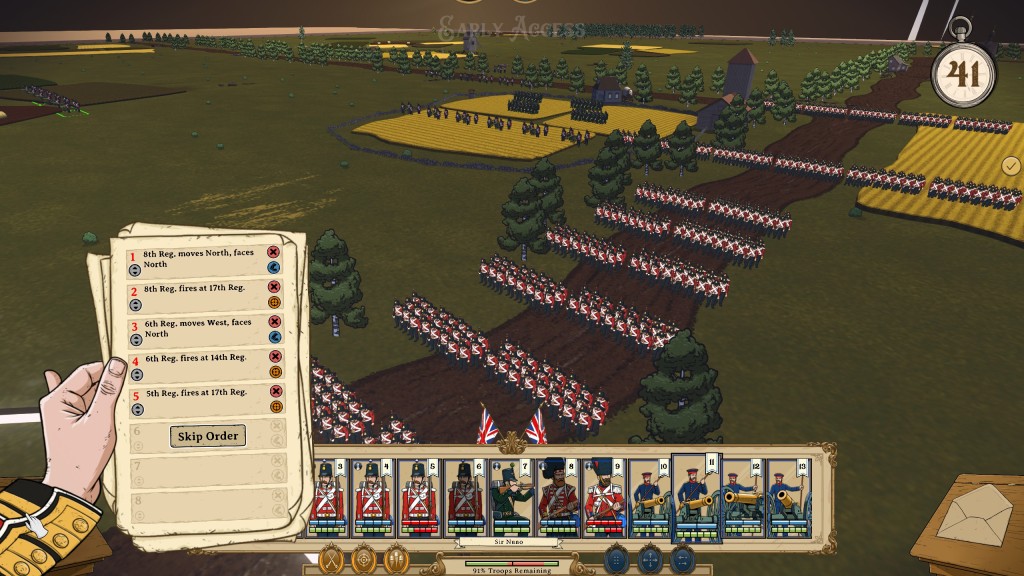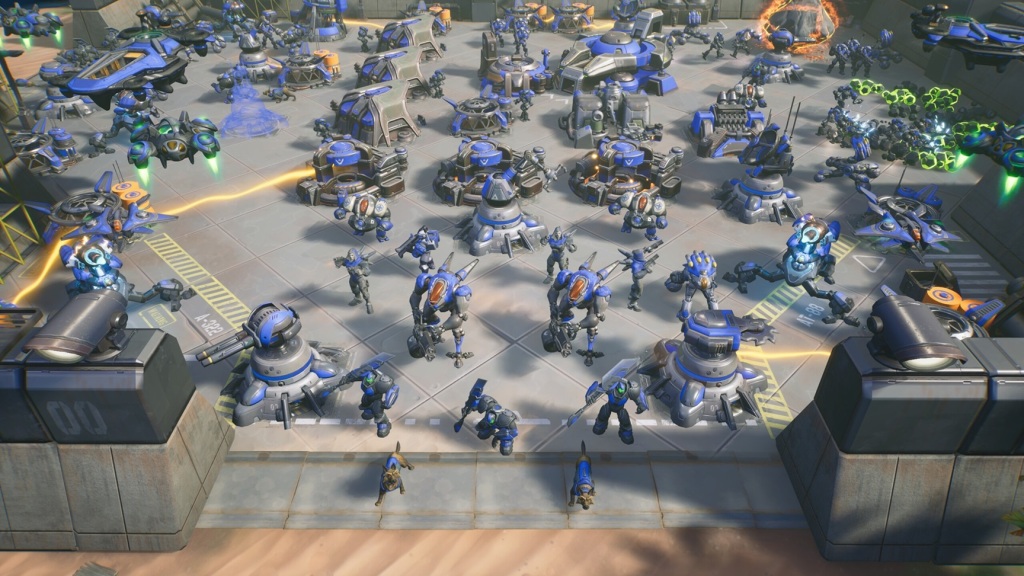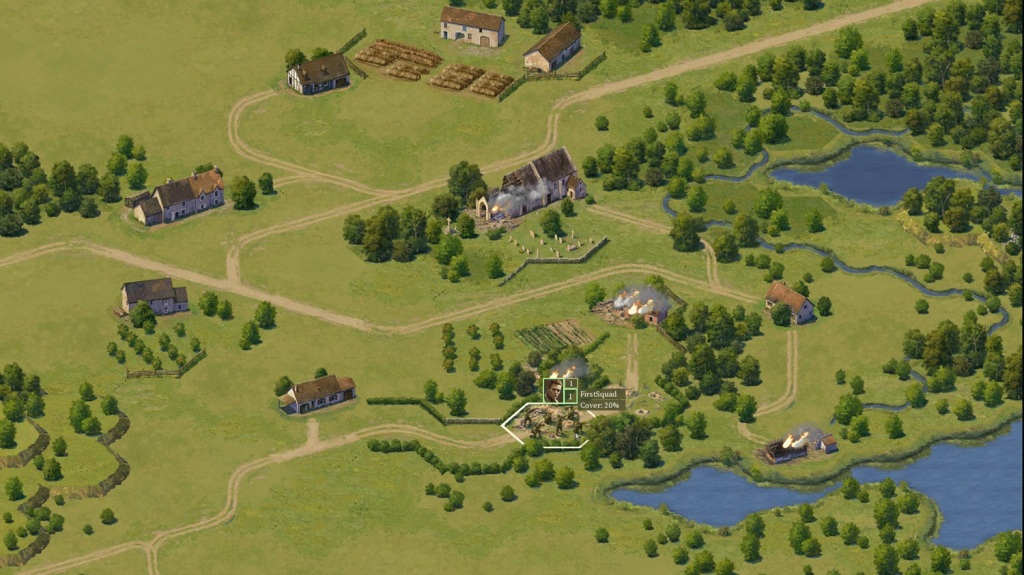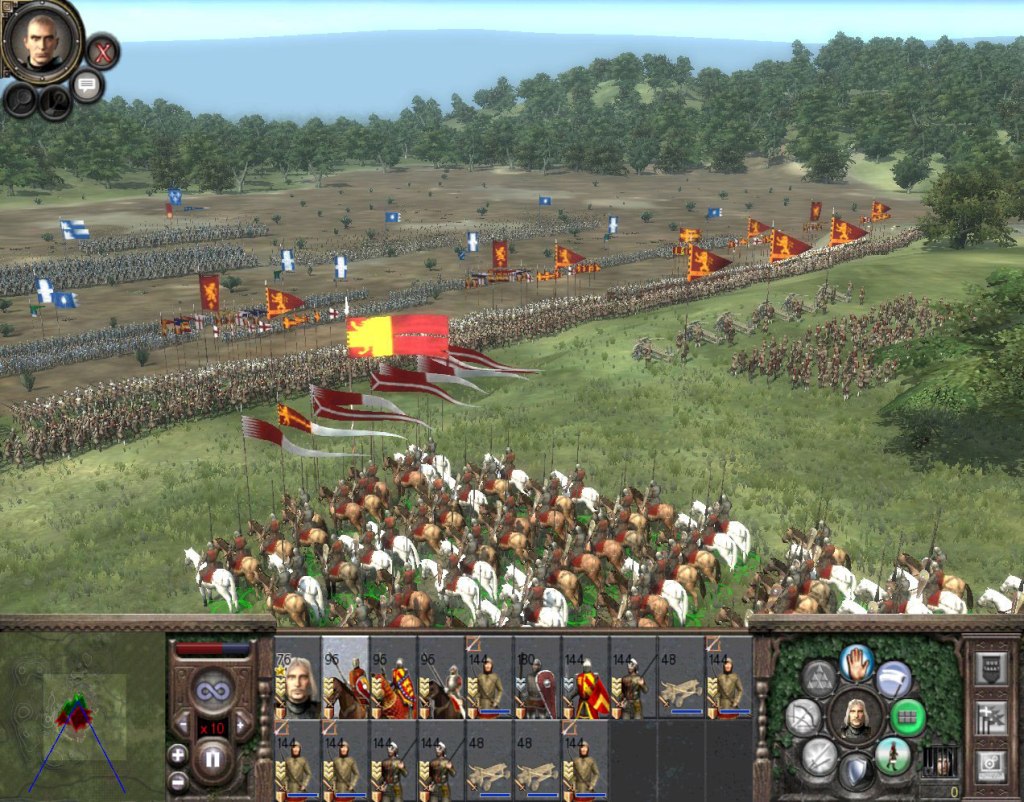Hello, dear reader. Small announcement: For quite some time I’ve been desiring to create a smaller format that allows me to cover a wide range of other games played by yours truly that- due to the sheer size and effort of a usual review, that may last up to a month in some occasions- never get covered or featured. So, to scout out more of what’s happening in the Strategy and Wargaming genre, Jagers and Voltigeurs will periodically sweep the field of the battle, skirmish, and assess what’s out there. Is it worth engaging? Or is it wiser to hide behind a cheval de frise? Consider this to be more akin to real first impressions. An introductory article. An Opening Salvo, if you will. Of course, never forget, opinions will vary.
Fire & Maneuver is the first game of long-time and famous YouTuber The Armchair Historian. It’s a self-described “unique strategy game made by history buffs for history buffs, wargame enthusiasts, and casual players alike. Strike the perfect balance between history and playability, F&M combines true-to-life units created through extensive historical research with clever but engaging mechanics developed by a passionate team to create a strategy title that has a little something for everyone“. One thing I’m willing to concede is this: Fire & Maneuver does attempt to bring the usually “traditional wargame” format (if even there’s such a thing nowadays) to a more mainstream (if there’s such a thing) audience by simplifying some gameplay elements, and it mostly succeeds, sometimes to its own detriment, by oversimplifying.
This is a turn-based tactical game with a strategical element on the side for added flavor where each player sends out orders to their units. There are a limited number of orders each turn that Digital Major Generals are capable of issuing. After those orders are sent, they’ll be executed simultaneously with the enemies’ orders (but not really), by following the order in which the orders were issued. Is this making sense? No? Well, that’s because F&M works differently than most WEGO games. It’s simultaneous in a sense, but not really, and that’s because both sides set up their movement and firing orders, send them, and watch them unfold. However, both sides’ movements and actions are not simultaneous. After a set number of orders were given, the game will play out the actions in the same orders you laid them out, interconnecting them with the enemy’s orders, like so: Friendly unit moves- Enemy unit moves- friendly unit moves- enemy unit fires- friendy unit fires- Enemy Unit Charges, and so on. To be completely honest, I still don’t know what to make of this system. While I don’t necessarily dislike it, I can’t say it’s very intuitive either, and if that’s to capture the randomness and chaos of order issuing in those times, there are better ways to do it. Time delays worked great in Armored Brigade, chains of command lend Grand Tactician: The Civil War (1861-1865) great authenticity, and the message writing and subsequent mortal messengers in Scourge of War turn the simple act of moving troops into a high-stake game. Well, at least this turn-based system makes the game unpredictable, so that’s a good thing, especially when the AI is still rather lackluster. These silicon foes will unnecessarily expose their flanks, flock to chokepoints and make the worst use of artillery since the Nivelle Offensive, but instead of using it lavishly, it might as well never unlimber it in the first place. In fact, during all my random battles, just once, the French guns fired.
In the image above, the enemy regiment crossed the bridge and decided that the best course of action was to turn their sides towards the defending Gatling guns right in front. I need hardly say what happened next. But not all is lost, and apparently, from what I read on the Post-Launch Plans, it seems that the AI has been intentionally dumbed down for release, and it’s set to very easy.
The number of orders per turn tends to be more than enough to move most armies out, reposition troops, take some shots, and escape unfavorable situations. What this ordering system does, is force players to prioritize and choose (if you consider that a good or a bad thing… well, depends on what you like) what’s critical. Of course, the AI and other players suffer the limited rationing of directives. At least there are no behind-the-scenes buffing shenanigans to compensate for poor artificial intelligence. One odd thing, but this might actually be intentional, is that moving 2 separate units that share the same hex will cost just one order. If this is to incentivize the group movement of troops or just an oversight remains to be seen.
Before moving on to other affairs, just a very small note about the movement system here: The basics are that units occupy an octagon (instead of the usual hex or square) and can face one of 8 directions, but can only move forwards, backward and to the sides, with no possibility for any transversal movement, and that’s because octagons can’t fully connect with other octagons, so there’s always an empty square in between four octagons. I would love to know the reason for this design decision. Take a look at the picture below.
It really doesn’t avert the mind, but it comes off as weird and I’m failing to see why to use it because even units that are not directly facing enemies can fire at the surrounding octagons, so the game basically plays out as it was taking place on a square map. If you happen to have an idea as to why octagons should be used, please let me know down below, I would love to find that out. The movement orders are extremely liberal with what they allow players to do. Long gone are the restrictive movement requirements of Field of Glory II and Pike and Shot: Campaigns. Want to turn your back on the enemy? No cohesion was lost. To stop a cavalry charge and have the horses turn around on the fly? No problem. Unlimbering artillery before firing? What is that? But at least the game does something interesting with its terrain features, rather than being just cosmetic, grain fields and houses offer much-needed cover, rivers are impassible and forests can hinder movement. The available maps are all very plain, and the game would benefit much by having topography impact the results on the field of battle.
Each of the game’s 9 factions has its unique perks, strengths, and weaknesses and it’s all very on the nose: the Prussians can issue two movement orders and two fire orders to every unit, giving them more flexibility. The British have more ranged damage to represent their defensive playstyle and, hilariously enough, I love how the tutorial shames the Russian army for having a disorganized trait. I would love to know what the trait of the other nations is, but for the life of me I can’t find out in the menu. So maybe that’s an oversight that needs fixing? This ties directly with the game’s business model. The base Fire & Maneuver is free to play. Not a demo. Free to play. The game’s currency is “merits”, won by defeating enemies on the field. Each faction costs 5.000 merits, and there’s already 10.000 on your bank account when you boot the game for the first time, allowing 2 nations to be unlocked from the get-go. These unlockable nations can only be used (at least, as of right now), to fight in multiplayer and custom battles against the AI. Those who want to skip the grind have a base pack available for 13,49€. Even if you don’t have the nations unlock, you’ll still be able to access the in-game strategic operations.
As they stand, these troop ordering on the grand scale are basic affairs, playing more like a game of risk, or Imperial Glory (remember that gem? From 2005, and it would run on my pc all the way back when). There’s not a lot to say on that front other than the map looks really pretty.
Unsurprisingly, its art style is directly imported from The Armchair Historian channel. Units look overly exaggerated and a cartoonish representation of real-life stereotypes. with thick black lines outlying their bodies and features. This won’t be to everybody’s taste, but stick with it, and after a couple of turns and your brain will fill in the blanks with detail. The tactical maps are all designed in 3D, so assets like houses, trees, bridges, etc. feature all dimensions, while the units are all 2D sprites. A bit similar to how games like Scourge of War and, to some extent (at least, until patch 1.03) with Grand Tactician: The Civil War (1861-1865).
Mostly, every important bit of the battlefield is easily recognizable and it’s very easy to understand what’s going on, so that’s a plus. However, there some of the models look so similar to each other that they’re unable to be recognized if one zooms out generously, so prepare to look to the unit list from time to time to discern if those cannons are, in fact, cannons. Or just really shy howitzers. With the game being in Early Access, there’s little doubt this will be addressed sooner or later. The usual hiccups of an Early Access game are present: turns taking too long with nothing happening, never-ending game screens, excessive blur in the custom map, the game freezing, the audio resetting with every battle, and of course, the overall lack of content.
As of right now, Fire & Maneuver is a simple game- and I think it isn’t fair to say, it’s also simplistic- it’s a good game with some potential to capture eager historians into the wargaming rabbit whole. It’s a good introductory title that will do wonders to bring new blood into an aging audience. What it doesn’t do, however, is something interesting, or at least different, than other games, already out there, so if you happen to be a grizzly veteran of other, more complex and – I really don’t like this word but here goes- more hardcore titles, then there’s not a whole lot for you here except for the setting, the non-existing price tag and the curiosity of trying out a new game.
To round this off, here’s a list of what Fire & Maneuver enjoyers can expect during the next couple of months: an interactive tutorial; bug fixing; a map editor; AI improvements; more nations; graphical improvements.
Follow Strategy and Wargaming Socials
Strategy and Wargaming needs you to follow its socials. Are we the best strategy gaming website around? I would say so. Heck, what other options do you have? The Wargamer? Please.
So why not give us a follow on the cesspool that is Twitter, or join the 1000 other geriatric patients on Facebook? Or subscribe down below? Or maybe do everything? I don’t care, I’m not your grandmother.
If you enjoyed the article, consider buying me a coffee!
I’ve been running Strategy and Wargaming at my own expense since 2017, with only the ad revenue to cover the hosting, with everything else being done by me. So, if you’re an avid reader, you can afford it, and want to support the website, please consider Buying Me a Coffee by clicking this link, for as low as one euro! If you do, just know that you’re helping out a lot and contributing so that Strategy and Wargaming can continue growing!













Leave a comment